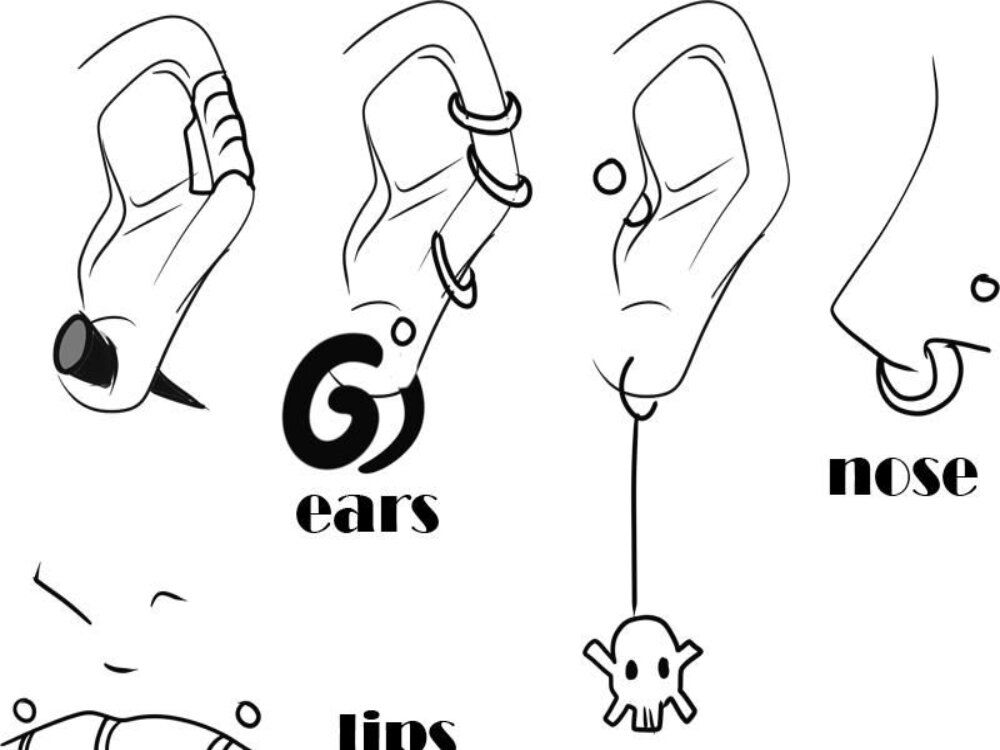Body piercing: how to
prevent complications
Punching places on the body to put on adornments and ornaments is common
from the foot, but it is not always easy. Recognize the risks and understand
basic safety precautions and post-puncture health care steps.
In some societies, it is common for women to wear various types
of jewelry on parts of the body, from ear piercings to nose and lips.
But this perforation carries risks that may cause complications. It is useful
in preventing infection and accelerating wound healing by choosing the
appropriate puncture site and how to take care of it.
Know the risks
Piercing is the insertion of a piece of jewelry into the ear
after piercing the earlobe, nose, eyebrow, lips, or any part of the body,
and is usually done without anesthesia.
Although piercings of the earlobe are generally less dangerous
than piercings of other parts of the body, any piercing of any part of
the body carries a risk of complications, such as:
Allergic reactions: Some types of jewelry, especially those made
of nickel, may cause an allergic reaction.
Oral complications: Piercing the tongue and putting jewelry in
it may cause small parts of your teeth to break and crack and may damage the
gums. Swelling of the tongue from piercing may interfere with chewing,
swallowing, and sometimes breathing.
Skin infection: skin infection may occur; Which causes
redness, pain, swelling, or a pus-like fluid discharge.
Other
skin problems:
Perforations can cause scars and keloids - areas that are raised
due to an overgrowth of scar tissue.
Bloodborne
diseases:
If the device used for the perforation is contaminated with
infected blood, you may develop a variety of bloodborne diseases. Such as hepatitis B, hepatitis C, tetanus, or HIV.
Tearing
or trauma:
A piece of jewelry may cling against your
will to a fixed object, tearing your skin to the point that it may
require stitching or another medical repair.
The condition may require medication or other treatment if you
develop an allergy, infection, or other skin problem near the puncture
site.
Make sure you are fully prepared
Before punching, think carefully about the decision. Think about
where you want to make a piercing, and whether you will be able to hide the
piercing when you need to.
If you're not sure about the benefits of this piercing, or
you're worried and hesitant, and you might regret it afterward one day, you'd
better wait. Do not allow anyone to pressure you to pierce your body,
and do not do this if you are under the influence of alcohol, drugs, or other
illegal substances.
Insist on safety precautions
To make sure you complete the punching procedure safely, ask the
following questions:
What does perforation mean? Don't try to punch yourself, and
don't let your untrained friend do it for you. Go to the doctor or a piercing
place that has qualified staff. Keep in mind that regulatory requirements and
licensing standards vary from state to state within America. Check with the
health department in your city, country, or region for more information about
local regulations regarding licensing and regulation.
Does the woman do the piercing wear gloves? Make sure your
piercer washes her hands well and wears new gloves for each
piercing or disposable gloves.
Is the woman doing the piercing using the right devices? When
piercing the earlobe, the piercer often uses an ear-piercing gun to speed up
the insertion of the earlobe into the earlobe. As for the rest of the other
piercing sites, the piercing woman pushes a needle into the body and
then inserts a piece of jewelry through the piercing.
Make sure the piercer uses only fresh, sterile needles.
Does the insightful woman sterilize the device that is used more
than once? Make sure that the piercing woman uses the autoclave to sterilize
all frequently used tools after each drilling process. As for tools and means
that cannot be sterilized with an autoclave, such as drawer handles, tables,
and washbasins, they must be disinfected using a commercial disinfectant or
bleach solution after each use.
Does the woman who does the piercing use allergy-resistant
jewelry? Look for stainless steel, titanium, or 14 or 18 karat gold.
Take good care of the puncture site
The skin around the newly punctured site may swell,
redden and thin for a few days. The site may even bleed a little. Ask the
piercer how to care for the piercing site and what to expect. To prevent
infection and to help speed healing:
Clean
the pierced site with mouthwash if the piercing is in the mouth:
If the tongue, lip, or cheek has been pierced, rinse the area
with an antiseptic mouthwash after each meal and before going to bed. After the
piercing is done, use a new soft-bristled toothbrush to avoid any bacteria
getting into your mouth. Once the puncture area is healed, remove the jewelry
at night and brush it to remove layers of bacteria that may build up.
Clean
skin puncture sites:
If a site is punctured on the skin, clean the area with
soap and water. Make sure to wash your hands thoroughly while cleaning the
puncture site.
Avoid
swimming: Don't go near swimming pools, rivers, lakes, hot tubs, etc.
until the hole has healed.
Do
not mess with your fingers when piercing:
Do not touch the piercing and do not bend the jewelry unless you want to
clean it. Keep clothing away from the piercing, too. Excessive rubbing or
rubbing can irritate the skin of the body and delay healing.
Take
care not to move the jewelry out of place:
Most piercings heal within six weeks, but some can take months
or longer to heal. If you want to disinfect and care for your piercing, leave
the jewelry in place while you do
this so the piercing doesn't clog. after injury



0 Comments